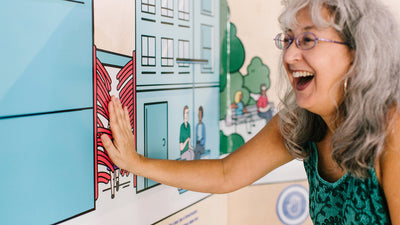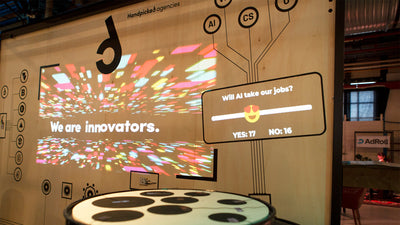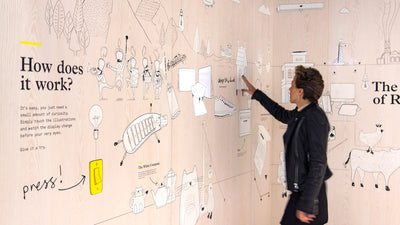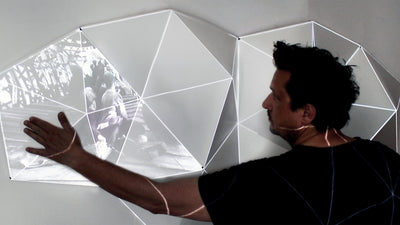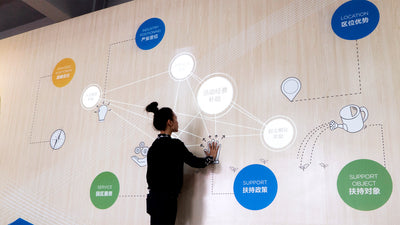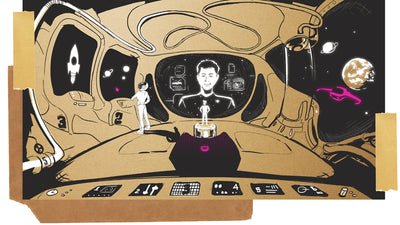WERC - AR Graffiti with Conductive Surfaces

When the Groninger Museum asked WERC (a multidisciplinary art collective based in Groningen) to participate as artists in the Children's Biennale, they quickly rose to the challenge, creating AR Graffiti.
WERC is a multidisciplinary art collective based in Groningen (the Netherlands) consisting of Joachim Rümke, Olav Huizer and Jelle Valk. Flip the word WERC and you get CREW. Typical of their work is the experimentation with new media and technology. WERC has a background in street art and WERC member Jelle Valk, has a lot of experience in making graffiti pieces.
When the Groninger Museum asked WERC to participate as artists in the Children's Biennale, they quickly rose to the challenge, creating AR Graffiti. WERC combined graffiti art with Augmented Reality (AR) and showed a new art form to their audiences. Various painted graffiti elements are were supplemented with a video projection designed by WERC. These elements were brought to life by projecting different digital layers over the graffiti with the video projection (video mapping).
For the touch sensitive graffiti, they used Electric Paint. By touching one of these details, the audience could trigger the designed video projection and the image of AR Graffiti changed. This gave them the opportunity to make their own choices and combinations in the final image.
The use of the Electric Paint gave WERC an easy solution for creating conductive surfaces. It simplified the process of creating user input data and allowed WERC to transform their artwork into an interactive installation while keeping the surface clean and clear of more intrusive sensor technology.
Prototyping was rather quick since the artists had used capacitive touch in the past, the main focus was to get a “sensing” surface on a large movable wall. That would also stand up to more non conductive paint being applied on top of it. During the prototype phase they looked at different patterns and their ‘sensing’ ability after multiple coats or other paint. Having some Printed Sensors to use as reference was a great help. They decided to go to a multitude of ethernet connected sensors to solve the large distances we had to bridge.
WERC used 6 modules containing an Arduino nano with an ethernet shield, a MPR121 and a custom pcb to hold it all and a modified version of the Arduino IDE library. They used OSC messages to send data back and forth from a computer running touch designer where all sensors and signals were sampled and processed, from there videos and sounds were triggered and using video mapping projected on the wall.
A big challenge were the false triggers the sensors would give and making sure the sensors calibrated automatically. The work needed to be reliably running for half a year with daily startups and shutdowns. Also the work needed to be sensitive enough to trigger without fully touching the paint by small children and large adults.
Images and Video: WERC
Do you want to find out how to create a projection mapping installation? Explore the Interactive Wall Kit and learn how to create a projection mapping installation.
We love it when you share your projects! Post your project on Instagram, YouTube, Vimeo, or Twitter, and make sure to tag @bareconductive or use #bareconductive. You can also send your videos and photos to info@bareconductive.com. Submit your project for a chance to be featured and you'll also receive 20% discount.


